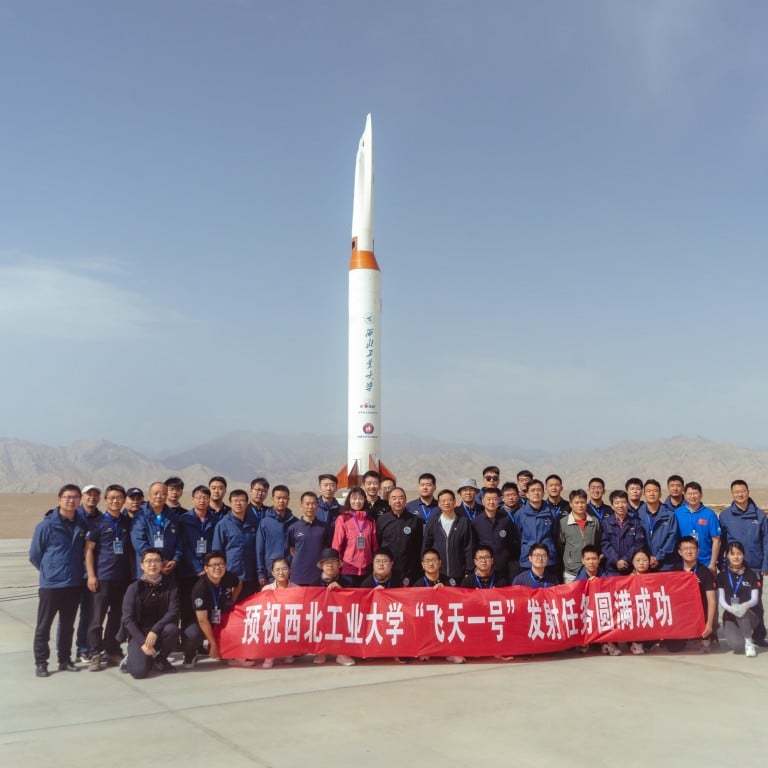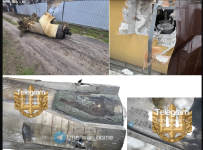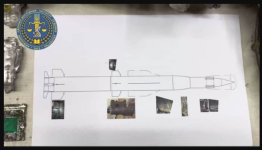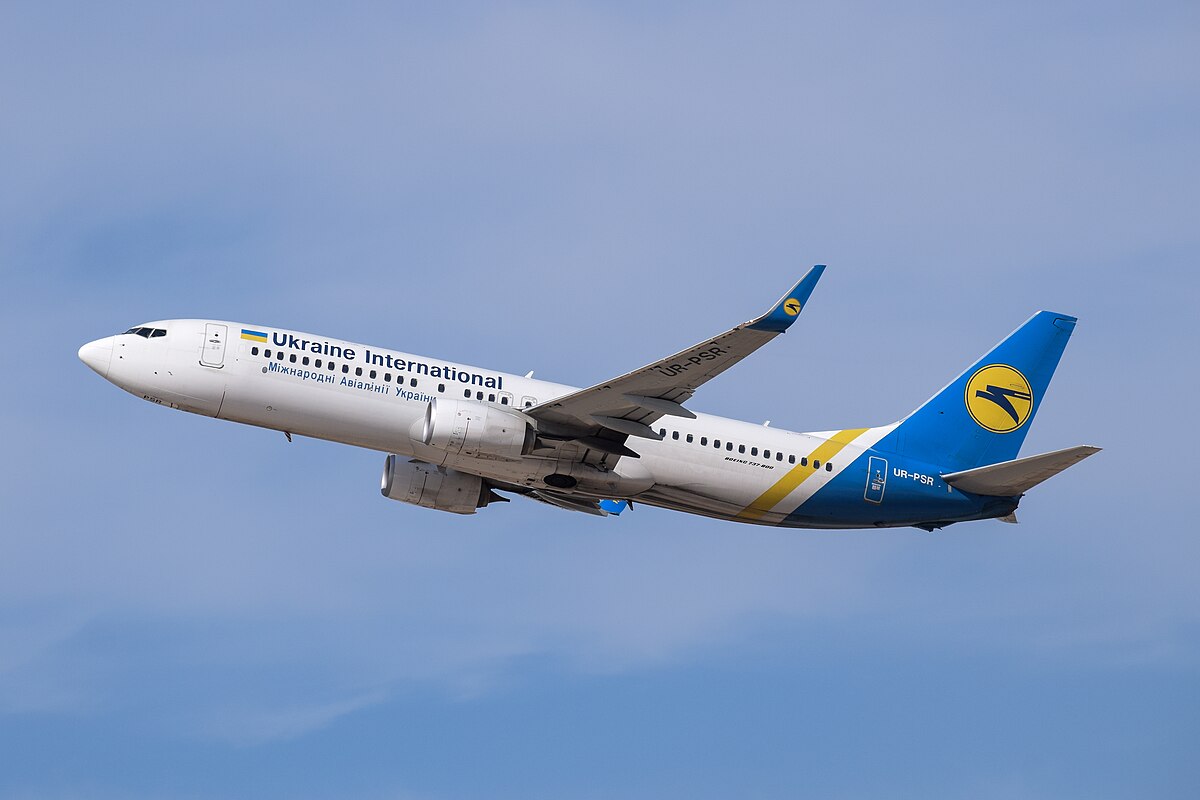Chinese scientists plan surface-to-air missile with 2,000km kill range
- Researchers from sanctioned university said the weapon will be able to shoot down early-warning aircraft and bombers from unprecedented distance
- According to peer-reviewed paper, the technology ‘is of great significance for maintaining peace and stability’
Published: 10:00am, 28 Mar 2024
China’s new missile design appears to be based on the Feitian-1 hypersonic vehicle, pictured ahead of its successful test launch in 2022. Photo: Northwestern Polytechnical University
Chinese researchers say they have designed a
surface-to-air missile that will vastly outstrip its rivals, with a kill range of more than 2,000km (1,240 miles), according to a peer-reviewed paper published by the Chinese language Journal of Graphics.
Ultra-long-range air defence is considered infeasible, with surface-to-air missiles typically having a flight range of tens of kilometres and the fastest few reaching several hundred kilometres.
The team, led by Su Hua, an associate researcher at
Northwestern Polytechnical University, said the weapon would be able to shoot down early-warning aircraft and bombers, preventing them from intervening in possible regional conflicts.
According to the paper,
the PLA would issue a warning to any target aircraft’s country of origin and only fire if it failed to turn back. The technology “is of great significance for maintaining regional and global peace and stability”.
The PLA’s brief was for a weapon with low production costs that is also convenient for daily operations, at a maximum 10 metres (33ft) long and weighing no more than 4 tonnes to make it suitable for vehicle-mounted mobile launch, the paper said.
Su and his team exceeded expectations, designing an ultra-long-range missile at just 8 metres (26ft) and with a mass of 2.5 tonnes. A solid rocket motor will provide the enormous thrust for vertical launch, followed by a ramjet engine to propel the missile in the upper atmosphere.
The paper did not detail the missile’s appearance but the design parameters suggest it may be similar to the Feitian-1 hypersonic vehicle, which has a similar two-stage propulsion system and was successfully tested by the university two years ago.
The Feitian-1 is the world’s first hypersonic vehicle to be fuelled by inexpensive and safe kerosene. Its wing-body fusion design significantly extends its range by allowing it to fly continuously within the atmosphere.
The scientists said that real-time data from reconnaissance satellites will guide the new missile, before it switches to its own sensors in the final approach, detonating its warhead when it reaches an effective kill range.
China has established a powerful global satellite monitoring network that makes traditional stealth technology – as used by the United States’ B-2 and B-21 bombers – useless.
Jilin-1 – the world’s largest Earth observation satellite constellation – is capable of tracking an F-22 stealth fighter, according to a video released by the Chinese authorities showing one of the jets zipping through the clouds in real time.
Larger aircraft – such as tankers, early-warning aircraft and bombers – are slower. Their distinct features can be visually identified and tracked by satellites using artificial intelligence as soon as they appear on the runway, Su and his team said.
These satellites are part of China’s “anti-access/area denial” (A2/AD) capabilities that it has been developing to cope with potential military conflicts in hotspots such as the Taiwan Strait and the South China Sea.
Beijing has vowed to bring Taiwan under mainland control, by force if necessary. Like most countries, the US does not recognise the self-ruled island, but opposes any unilateral attempt to change the status quo and is committed to the island’s defence.
China initially regarded hypersonic weapons as primarily a supplementary means of breaking through the US missile defence system and attacking fixed targets within the United States in the event of a conflict.
Technological advances and improved performance of these weapons in recent years have led Chinese scientists and engineers to propose increasing numbers of applications for them.
These have included the possibility of attacking a moving aircraft carrier group with a barrage of hypersonic anti-ship missiles, and sending air-to-air missiles swooping down from near space to engage US stealth bombers.
The PLA’s conventional ballistic missiles and hypersonic weapons already cover all US military bases in the first island chain – which runs from the Japanese archipelago to Borneo – including South Korea, Japan and the Philippines.
China has also deployed a high-density undersea observation network in the South China Sea and the western Pacific Ocean to detect US nuclear submarines and launch attacks when necessary.
The US military has been gradually reallocating its forces to the second island chain, including its base on Guam, around 2,600km (1,620 miles) from Taiwan and 3,000km (1,860 miles) from the Chinese mainland.
A key US strategy in the event of a conflict in the Taiwan Strait is to send bomber fleets from Guam to target China’s fleet and coastal infrastructure and prevent the PLA from landing on the self-ruled island.
Earlier this month, the US Air Force tested a hypersonic missile launched from a B-52 bomber near Guam, in what some military experts said was a show of force and capability aimed at China.
According to its developers, the AGM-183A Air-Launched Rapid Response Weapon will be able to strike ground targets at speeds exceeding Mach 7 from around 1,600km (994 miles) – previously considered a safe distance.
Despite congressional concerns, the US Air Force plans to purchase hundreds of these missiles, which will also be able to launch from the latest B-21 stealth bomber, at around US$15 million each.
The Northwestern Polytechnical University is a crucial institution for developing cutting-edge weapons in China and has long been subject to comprehensive US sanctions.
Two months after the Feitian-1’s successful 2022 test flight at a military base in China’s northwestern Gobi Desert, the Chinese government accused the US National Security Agency (NSA) of launching a cyberattack on the university.
Unlike previous statements that were vague about the perpetrators and techniques used, the Chinese government released specific details about the operation. Some cybersecurity experts interpreted China’s response as an unusually severe warning.
China alleged that the NSA’s Office of Tailored Access Operations (TAO) used more than 40 covert and powerful cyber weapons to hack into the university’s internal network and obtain confidential information.
To conceal its true identity, TAO went so far as to attack the network infrastructure of its allies, including Japan and South Korea, using them as stepping stones, according to the Chinese government.
Other details disclosed by the Chinese government in its statement after the alleged cyberattack included the identification of the operation’s head and personal information such as which high school he attended.



www.indiatoday.in
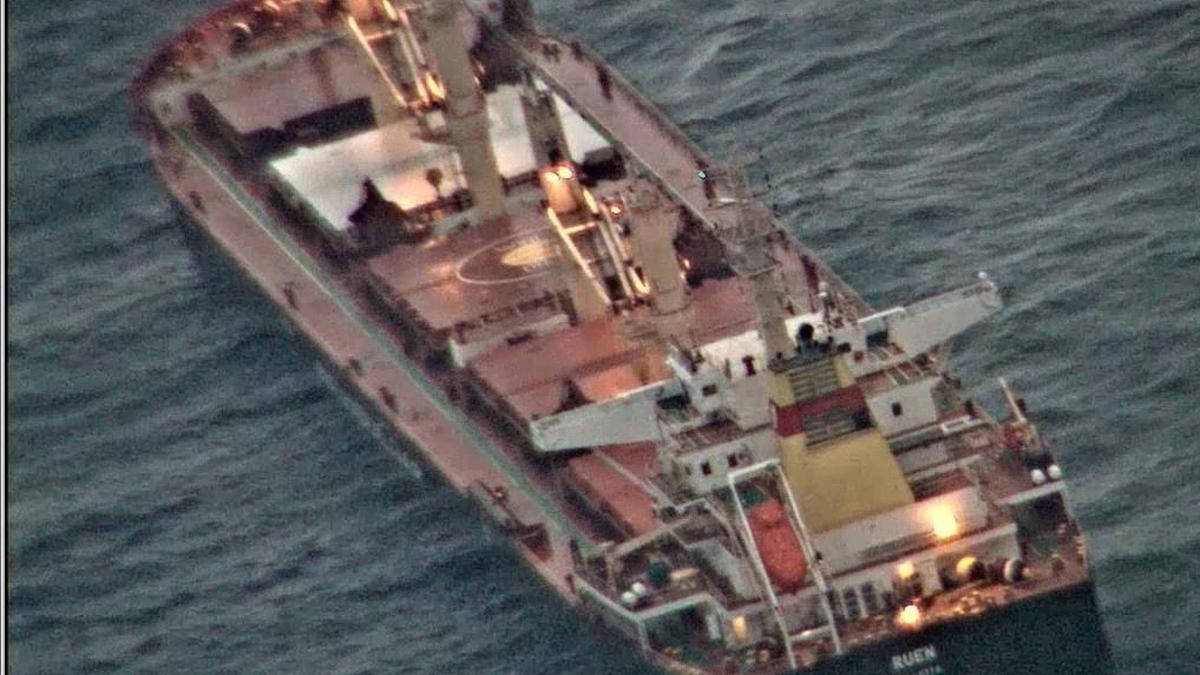
www.thehindu.com

www.aljazeera.com

www.deccanherald.com
www.theweek.in

www.asianage.com



